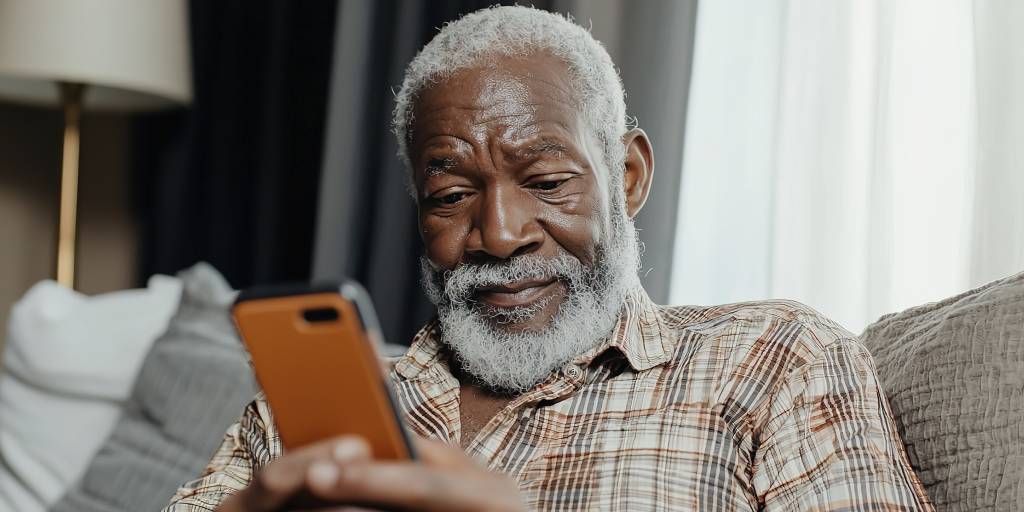Using Healthcare Education to Improve Health Outcomes

If clinicians were given ten minutes back in their day to spend it with a patient — listening, reassuring, educating, and telling them what to expect — those could become the most valuable ten minutes of the day.
Healthcare education is more than just a component of care. It empowers patients, fosters trust, and leads to better health outcomes. However, finding the time to deliver comprehensive education remains a challenge, particularly for underserved communities.
Barriers to Healthcare Access
Many patients face challenges rooted in social determinants of health (SDOH), nonmedical factors that influence health outcomes. These include healthcare access and quality, education access and quality, social and community context, economic stability, and neighborhood and built environment. According to the CDC, SDOH have a greater influence on health than either genetic factors or access to healthcare services.
Marginalized and underserved communities often face:
- Geographic Disparities: Limited healthcare facilities in rural areas require patients to drive long distances for basic care.
- Financial Constraints: Many individuals lack the resources to afford treatments, transportation, or preventive care.
- Awareness Gaps: A lack of information about available services prevents many individuals from seeking help until issues worsen.
These complex socioeconomic challenges create a cycle of delayed diagnosis and unmanaged chronic illness that result in poor health outcomes. By meeting patients where they are and understanding their unique social, economic, and cultural contexts, clinicians can help break down some of the barriers and enable patients to successfully navigate the healthcare system.
Advocacy: A Lifeline for Better Care
Advocacy can be a bridge between patients and a complex healthcare system. By teaching patients how to advocate for themselves, clinicians empower them to ask questions, understand their rights, and actively participate in their care. Effective advocacy can:
- Ensure patients’ voices are heard and concerns are addressed
- Simplify navigation of the complex healthcare system, securing necessary resources and treatments
- Provide education about patients’ rights, enabling informed decision-making
For patients unable to advocate for themselves due to illness, limited knowledge, or other barriers, having a trusted advocate can make the difference between delayed care and timely, effective treatment. Advocacy is not just about treating a patient on a given day — it is a sustained commitment to their well-being.
Clinicians who take the time to build strong clinician-patient relationships gain deeper insight into the challenges their patients face. When a clinician understands what’s going on in their patient’s life, they are better able to identify what treatments that patient can afford and access and any alternatives that could work better for their situation. This vital role of advocacy highlights the critical need for healthcare literacy to equip patients with the tools they need to navigate their health journeys effectively.
Improving Health Literacy for Better Outcomes
Healthcare literacy — the ability to understand and act on health information — is foundational to better outcomes. A 2020 report from UnitedHealth Group states that improving health literacy could prevent nearly one million hospital visits and save over $25 billion a year.
Research shows that patients with higher health literacy are more likely to adhere to medical treatment. This makes sense as health literacy touches every aspect of a patient’s healthcare journey, from finding and accessing care to completing intake forms, understanding HIPAA documentation, following prescription instructions, and scheduling follow up appointments. Addressing health literacy is a responsibility that healthcare organizations must prioritize, but it’s not easy. There are multiple challenges to overcome, including:
- Complex Medical Language: Medical jargon and technical explanations can be overwhelming and intimidating.
- Time Constraints: Overburdened healthcare professionals may lack the time to thoroughly explain diagnoses or treatments.
- Comfort Level: Many patients hesitate to ask questions due to worry that they will appear uninformed or will inconvenience the clinician.
- Cultural Disconnect: Information that does not consider a patient’s cultural or educational background may lead to misunderstanding or mistrust.
These challenges can leave patients feeling powerless and disconnected from their own care. Overcoming these barriers is essential for not only improving individual health outcomes but also for fostering trust and collaboration between patients and clinicians.
The solution lies in creating a healthcare environment where communication is clear, accessible, and patient-centered. By prioritizing healthcare literacy and adopting strategies to bridge these gaps, clinicians can empower patients to feel confident and equipped to take charge of their health. These strategies include:
- Encourage Preparation: Patients should be encouraged to come to appointments with a list of symptoms, questions, and concerns. This proactive approach ensures they leave with the information they need.
- Tailored Communication: Simplifying medical explanations and using culturally relevant materials can make health information more accessible to diverse populations. Communicating in ways that resonate with patients’ backgrounds fosters trust and understanding.
- Encourage Open Dialogue: Creating an environment where patients feel comfortable asking questions and discussing their care is crucial. Clinicians can build stronger relationships by emphasizing that no question is too small or unimportant.
- Expand Access: Supporting initiatives like mobile clinics, telemedicine, and community outreach programs helps deliver healthcare to rural and underserved populations. These efforts provide services like wellness checks and educational seminars, promoting disease prevention and healthy lifestyle choices while overcoming geographic and logistical barriers.
- Health Advocacy Programs: Training healthcare professionals and community members to act as advocates ensures that patients have guidance navigating complex systems and accessing necessary resources.
- Alleviate Administrative Burdens: Reducing administrative tasks allows clinicians to spend more time with patients, listening, explaining, and building meaningful connections that improve understanding and outcomes.
These strategies help break down obstacles to health literacy and patient engagement, and by integrating these strategies into broader efforts, health outcomes can also ultimately be improved.
The Role of Technology in Empowering Care
Improving health literacy is key to achieving better healthcare outcomes, but this requires time – something clinicians often lack due to heavy workloads and administrative responsibilities. When healthcare professionals can dedicate more time to meaningful interactions with patients, they are better equipped to provide the education, support, and advocacy patients need to succeed in managing their health.
Technology plays a crucial role in making this possible. By automating routine administrative tasks and streamlining workflows, technology allows clinicians to focus on direct patient care. Tools like telemedicine and mobile health apps not only increase access to healthcare but also provide patients with critical education and information. These platforms are particularly valuable for individuals in underserved areas, offering preventive education and personalized care plans that empower patients to take control of their health.
Advanced technological solutions also help address risk gaps and deliver richer, more actionable data at the point of care. This enables healthcare professionals to create tailored interventions and educational strategies that align with individual patient needs. The result is not only better prevention and management of chronic conditions but also a more engaged and informed patient population.
Organizations partnering with IKS Health gain access to innovative technology and expert support that prioritize both clinician and patient needs. The IKS Health Care Enablement Platform takes on administrative, operational, and clinical tasks, allowing healthcare professionals to focus on their passion for patient care. By removing these burdens, clinicians can spend more time building relationships, educating patients, and advocating for their well-being.
With clinicians on staff, IKS Health is able to design solutions using their perspective to ensure everything works within their workflows for the best outcomes for both clinicians and patients. It enables clinicians to provide better, safer, and more efficient care to their patients.
At the End of It, It’s All About the Patients
Every level of healthcare must center on the patient. When healthcare professionals are able to deliver high-quality, patient-centered care, the benefits ripple through entire communities. By improving health literacy, fostering advocacy, and leveraging technology, clinicians can create a system where patients are empowered to take charge of their health. When patients and clinicians work together, the result is stronger relationships, better outcomes, and healthier lives for all.


